Royal Doulton Potteries
Doulton Lambeth
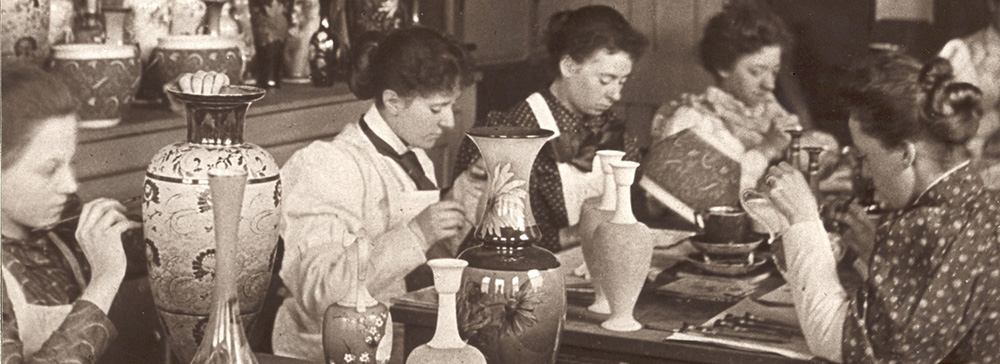
Two hundred years ago, the first Doulton Pottery was founded beside the River Thames in Lambeth, London. Initially John Doulton made bottles in salt-glazed stoneware for the domestic market and spirit trade. His son Henry expanded into drain pipes before experimenting with art pottery and opening the Lambeth Studio in 1871. Students from the local school of art incised and applied designs on stoneware art pottery, which became known as Doulton ware. By the 1880s the Lambeth Studio employed more than 300 artists, mainly young women, who also painted earthenware vases and plaques known as Lambeth Faience. Queen Victoria was an early admirer of Doulton ware, ordering vases for Windsor Castle and knighting Sir Henry Doulton, the first potter to receive this honor.

Lambeth Faience Exhibition Vase
by F. Lewis 1893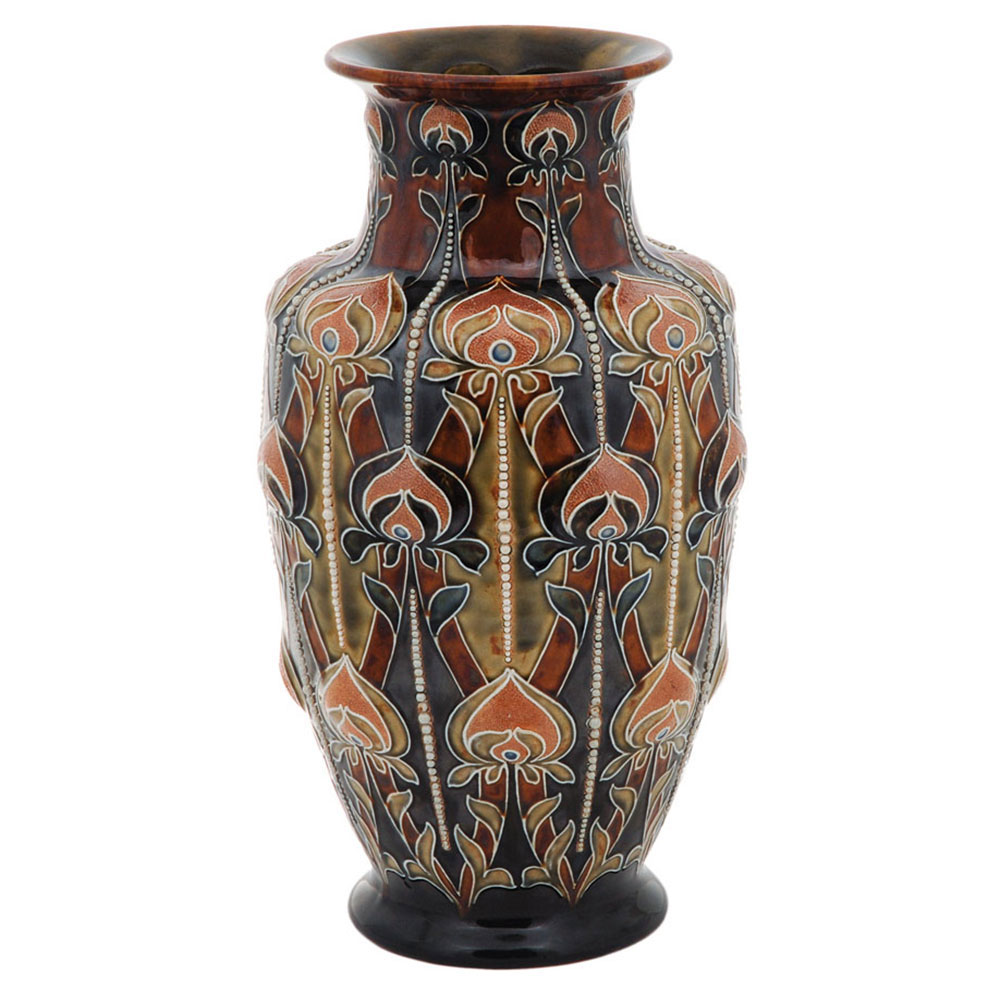
Doulton Lambeth Stoneware Art Nouveau Vase
by F.A. Butler c.1905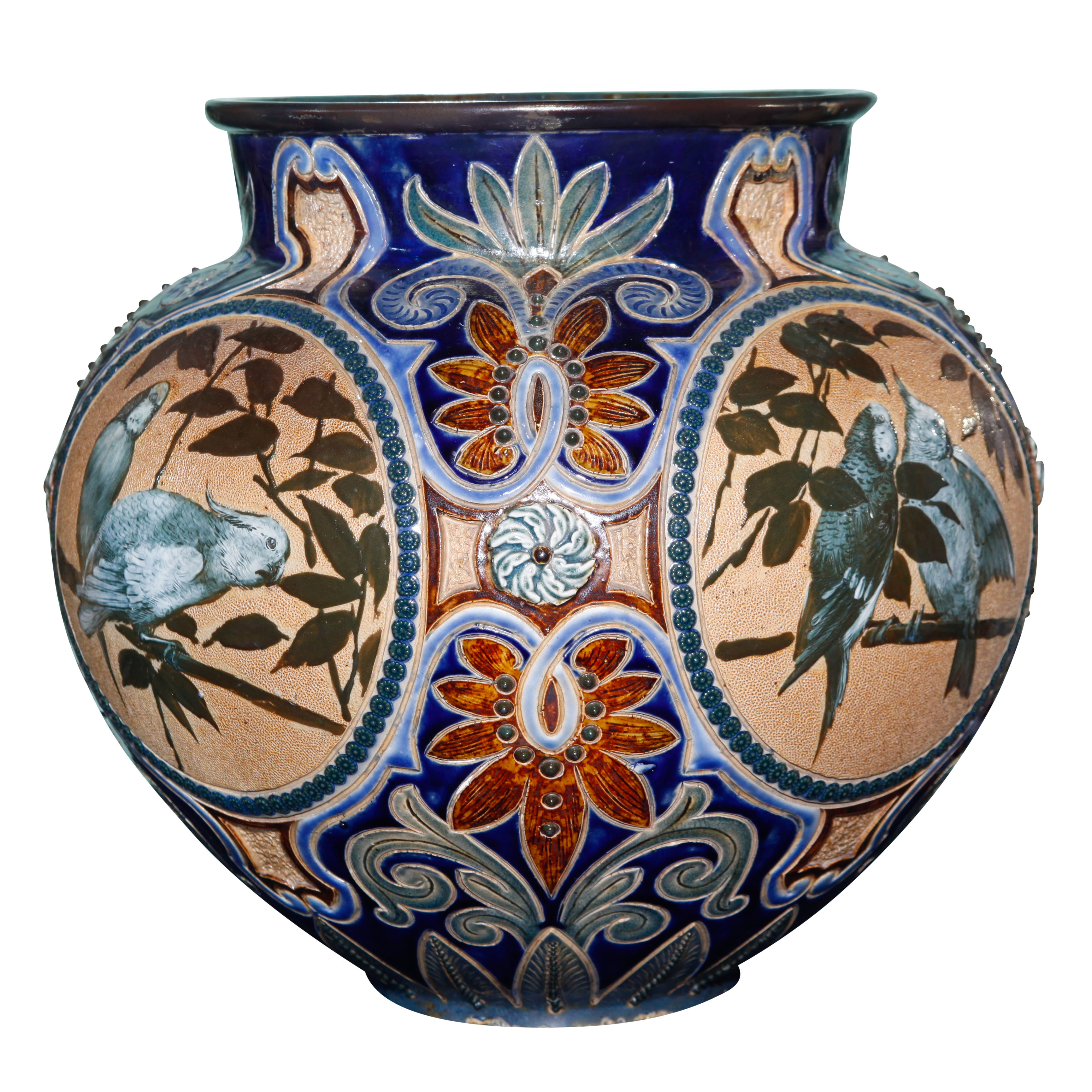
Doulton Lambeth Stoneware Jardinière
by F.E. Barlow c.1890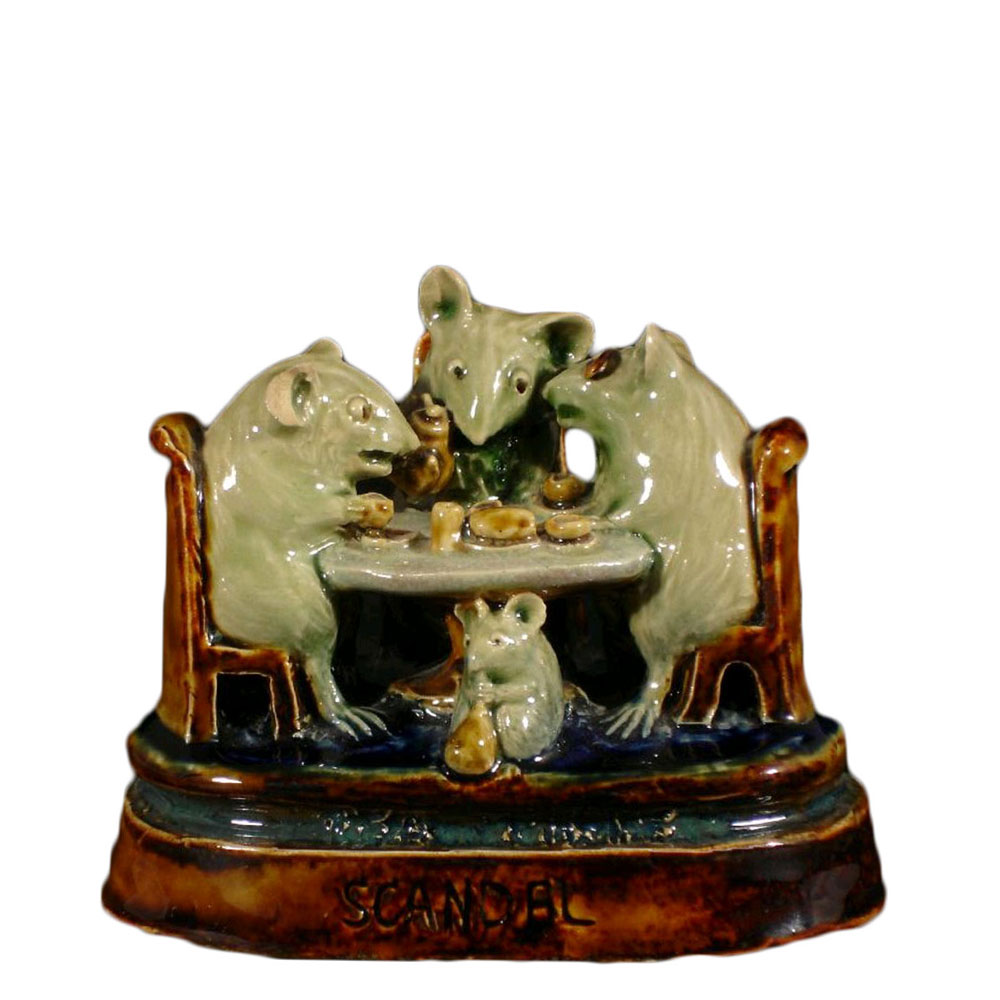
Doulton Lambeth Stoneware Scandal
by G. Tinworth 1888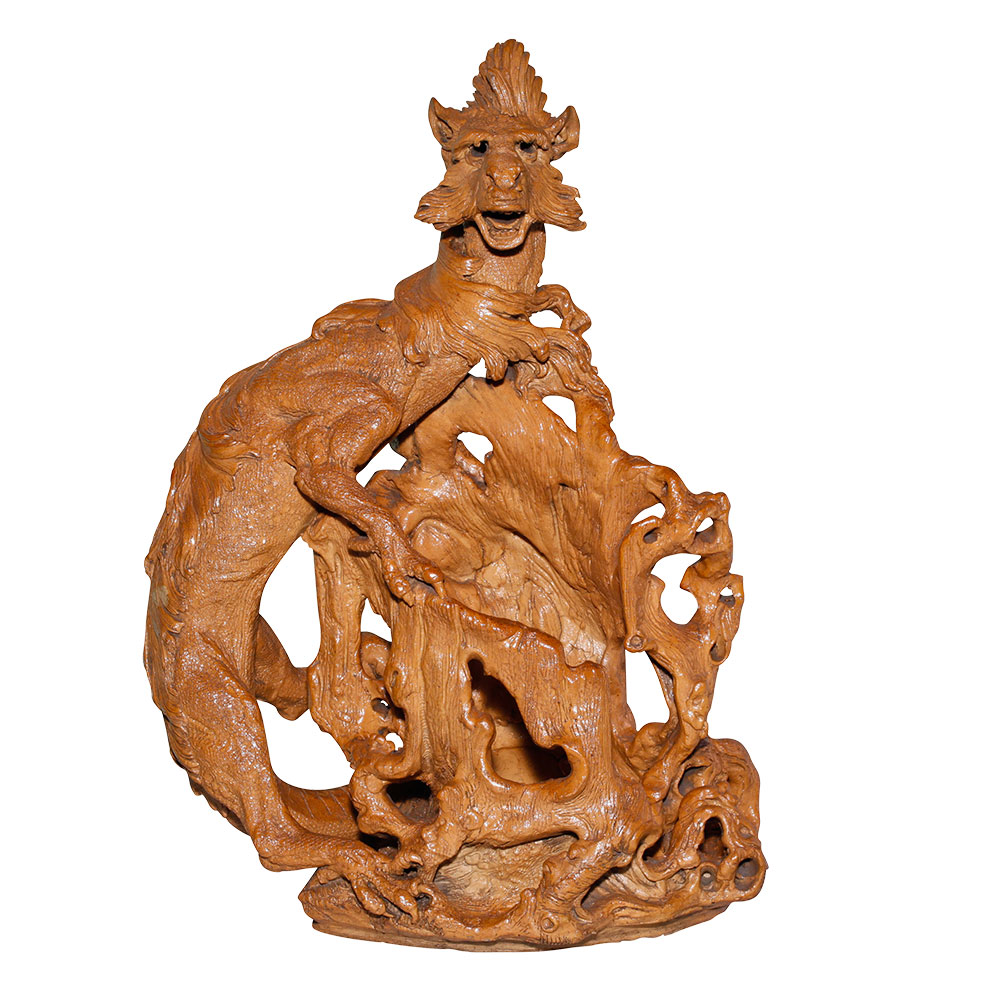
Doulton Lambeth Stoneware Reptile
by M. V. Marshall c.1885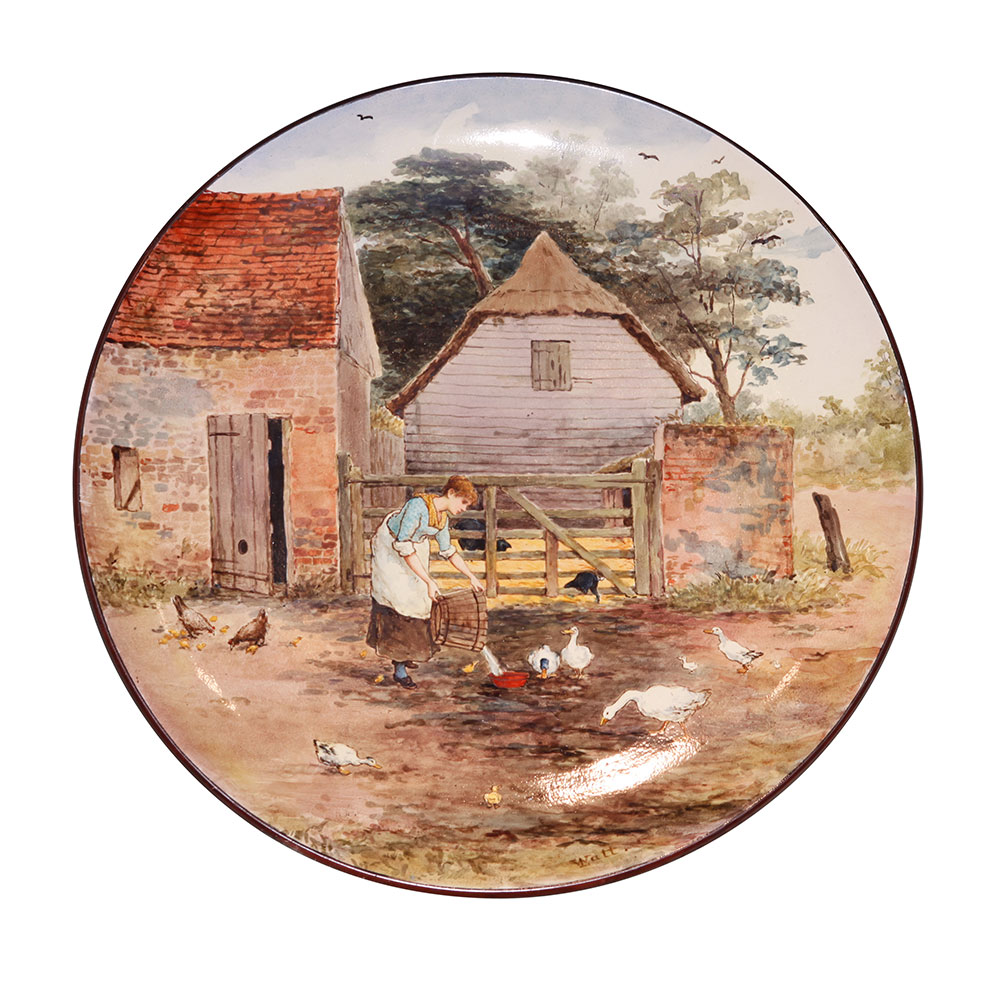
Doulton Lambeth Faience Plaque
by L. Watt c.1880
Doulton Lambeth Faience Daffodils Vase c.1890
Doulton Burslem
Henry Doulton expanded his business to Staffordshire in 1877 and acquired a factory in Burslem, Stoke-on-Trent to make tableware. A bone china factory was built in 1884 and artists at the new Burslem studio specialized in lavishly gilded vases, expensive tea wares and dessert services. Under the leadership of art director John Slater, talented artists painted flowers, landscapes, portraits and figurative scenes on beautiful bone china vases. The finest art wares from the Burslem art studio won many awards at the international exhibitions of the era, including Chicago in 1893 and Paris in 1900.
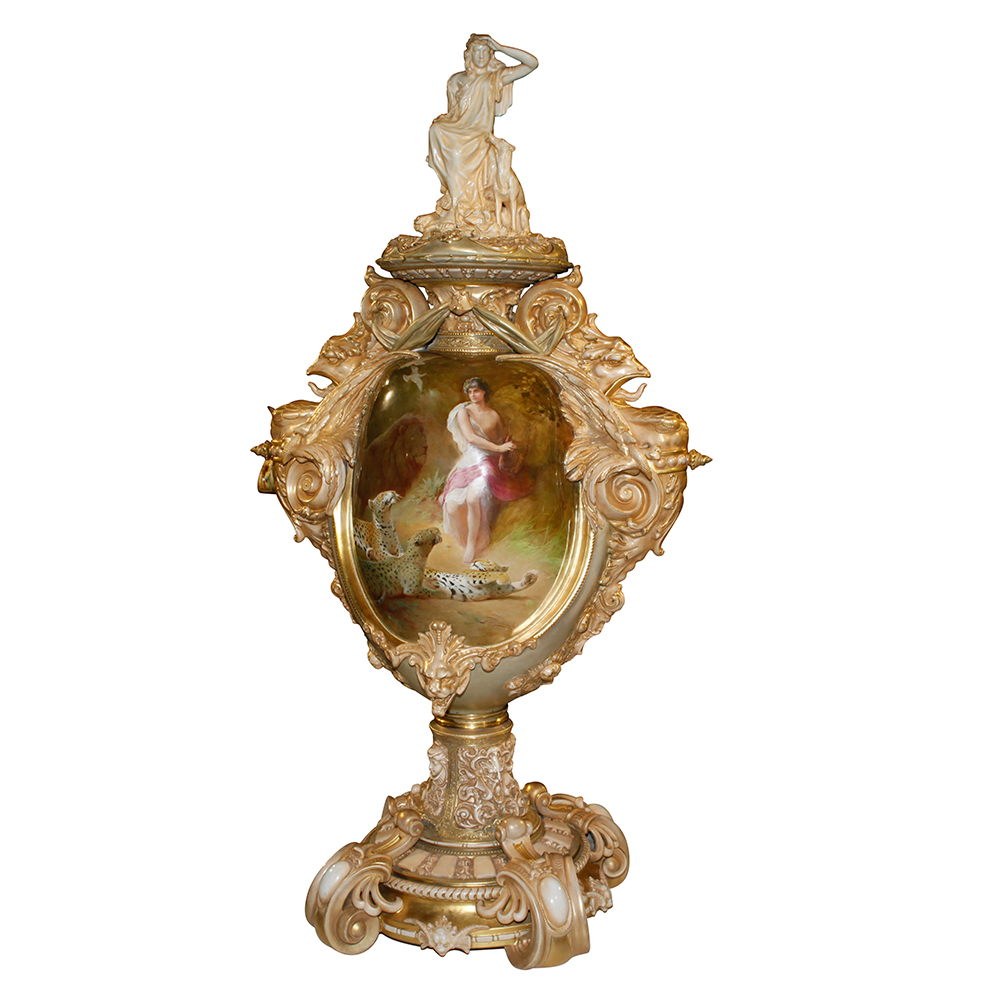
Doulton Burslem Diana Exhibition Vase
by C. J. Noke Paris 1900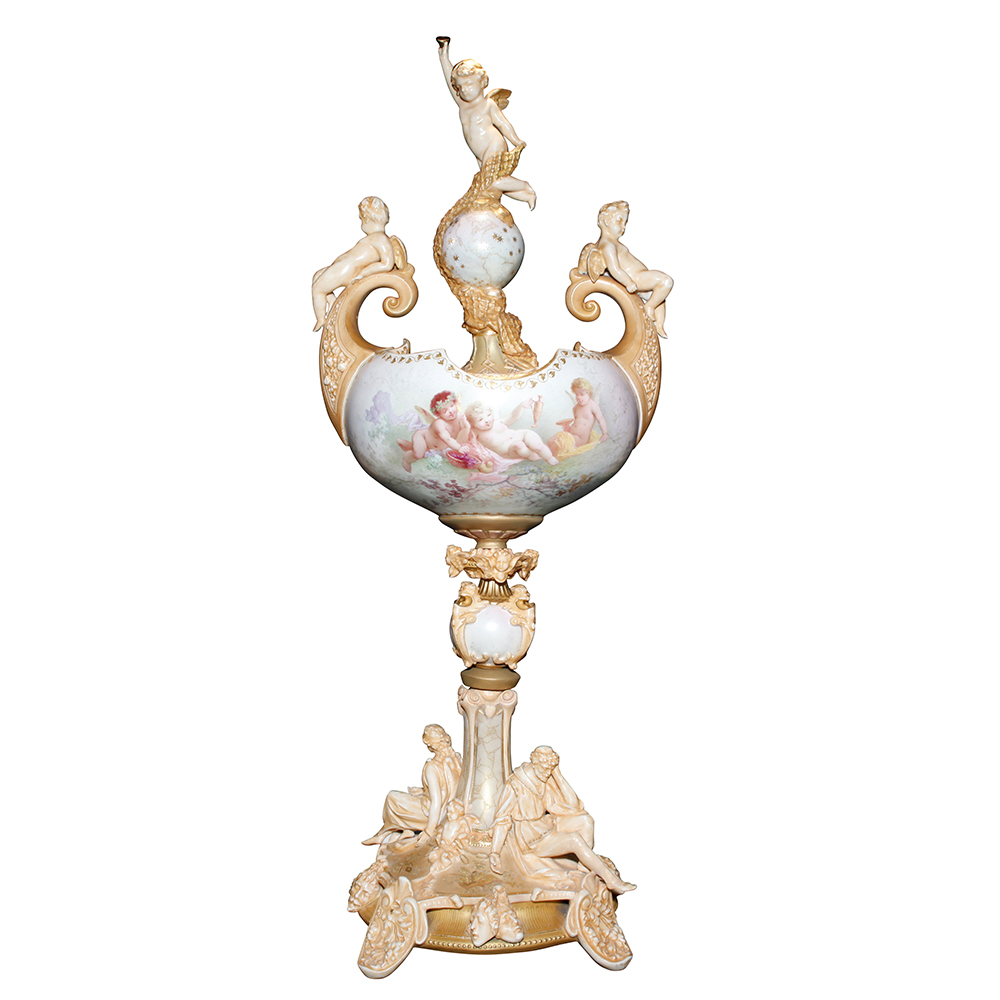
Doulton Burslem Love Exhibition Vase
by C. J. Noke Chicago 1893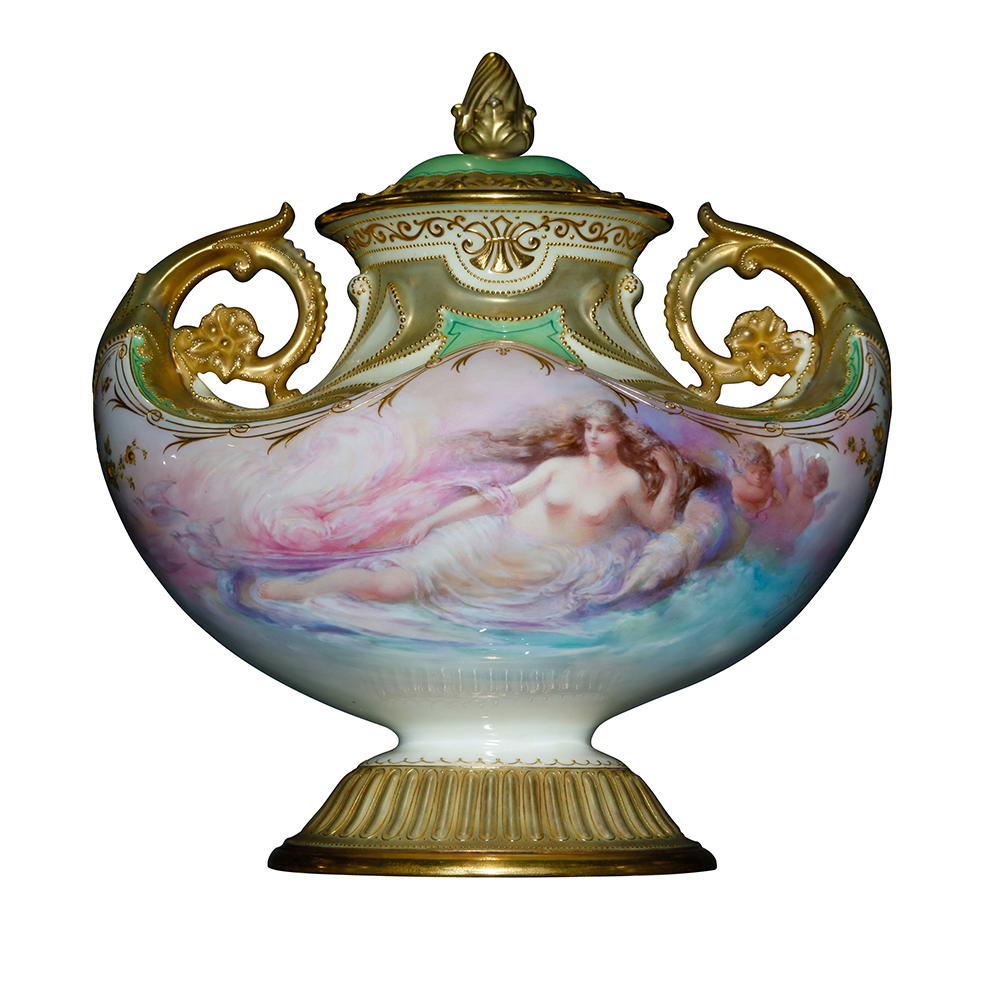
Doulton Burslem Bone China Urn
by G. White c.1905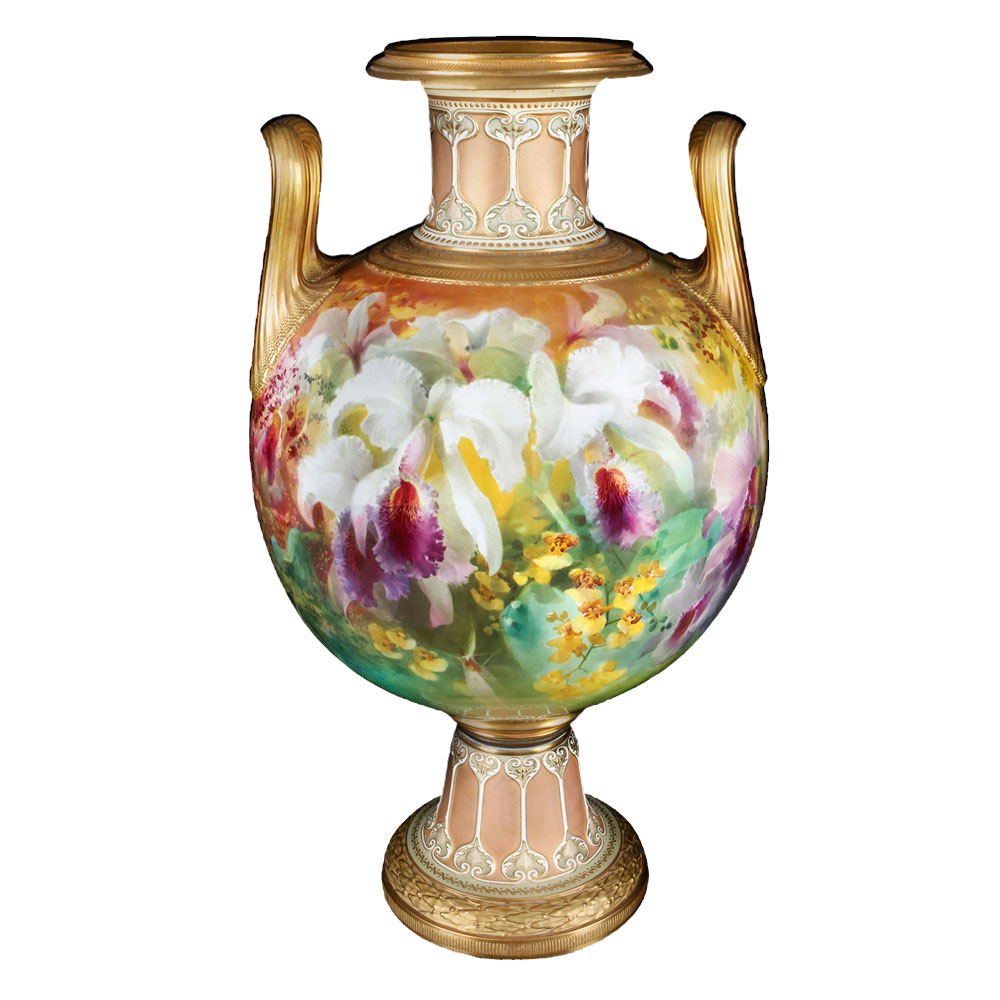
Doulton Burslem Orchids Exhibition Vase
by D. Dewsberry c.1905
Royal Doulton

Royal Doulton Rare Color of Darling
by C. Vyse c.1920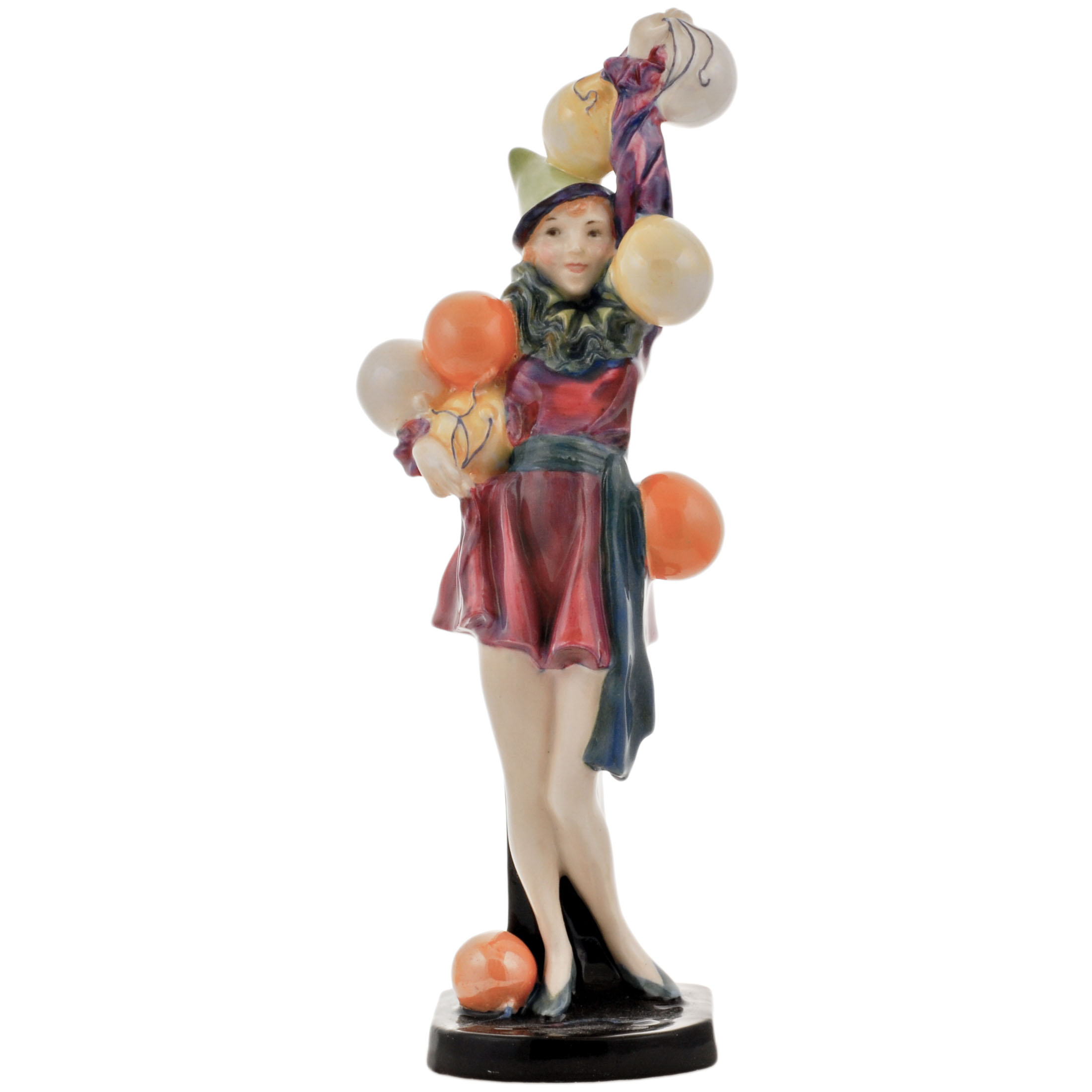
Royal Doulton Folly by L. Harradine 1929

Royal Doulton Tambourine Dancer
by C. J. Noke 1918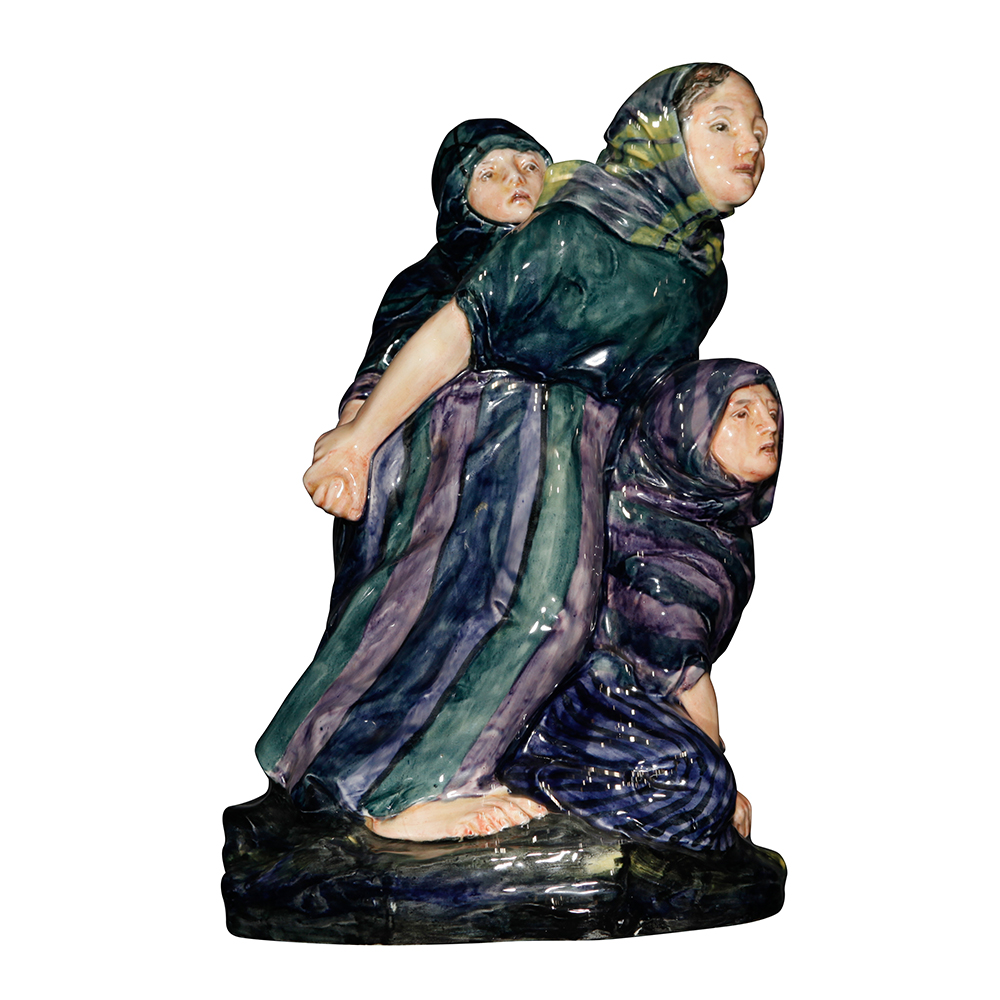
Royal Doulton Fisherwomen
by C. J. Noke 1917
Royal Doulton The Potter by C. J. Noke 1932

Royal Doulton Advertising Lion

Royal Doulton Sunshine Girl
by L. Harradine 1929
Royal Doulton Mermaid by H. Tittensor 1918
